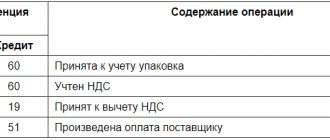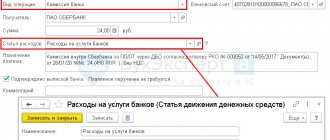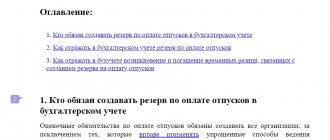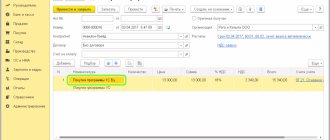It is not uncommon for entrepreneurs to attract borrowed funds to develop their business and expand the scale of production. Before the onset of the crisis, Russian organizations very often took out loans and attracted investments from foreign manufacturers and sponsors. Today, the situation of cooperation with foreigners is aggravated and requires special control and accounting. In this regard, it is important to understand what controlled debt to a foreign organization is, when it arises and how it is accounted for.
Definition
Controlled debt is the amount of obligations of a Russian company to a foreign lender. Debt arrears generated to foreign individuals and legal entities in 2021 are classified as special accounting objects for accounting and tax purposes.
The concept of controlled debts has appeared in the economy since the beginning of 2002. According to the Ministry of Finance, such transactions are recognized as insufficient capitalization. They imply preferential taxation and a reduction in the tax burden when receiving profits from dividends from the investment amount. That is, an investor does not directly invest money in a Russian company, but lends money and receives interest for it.
Arrears arise from an organization under microloan, lending, investment and other financial investments for the purpose of making a profit. It is important to distinguish between the amount of obligations and the likelihood of the lender exerting a certain influence and pressure on the borrower. If borrowed funds give the creditor the power to make important decisions in relation to the debtor, then the owner of the capital is recognized as an affiliate.
Accounting for controlled debt
Accrued KZ interest relates to the expenses of the enterprise. All related transactions must be recorded in tax and accounting documentation. For this purpose, the following wiring can be used:
- Dt 91.2 – Kt 66 (reflects the accrual of dividends on KZ);
- Dt 67 – Kt 68 (withholding tax on interest);
- Dt 68 – Kt 99 (if the debt ceases to be controlled);
- Dt 08 – Kt 66 (when calculating interest on a short term loan relating to an investment asset).
When determining the amount of the tax levy, the entire amount of dividends is not always taken into account, so a corresponding difference arises - a permanent tax liability displayed in the documentation Dt 99 - Kt 68.
Didn't find the answer to your question? Find out how to solve exactly your problem - call right now or fill out the form online: +7 (Moscow) +7 (St. Petersburg)
It's fast and free!
Legal regulation
The basic definition of controlled debt, the criteria for its calculation, the procedure for calculating interest and recognizing expenses is regulated by Art. 269 of the Tax Code of the Russian Federation. The amendments made to this article are in force according to Law No. 25-FZ of February 15, 2016.
Controlled debt is debt that arises between Russian and foreign enterprises
Recognition Criteria
Let us list the reasons why debt arrears of a domestic enterprise are considered controlled:
- Accounts payable under contracts with a foreign counterparty owning more than 20% of the debtor's capital.
- Obligations to a company registered on the territory of the Russian Federation, but having a direct impact on the activities of a non-resident.
- Contractual relationships in which the guarantor or guarantor is a legal entity registered in another state.
- The amount of debt to a foreign company exceeds the size of the founding fund by more than three times for ordinary enterprises, and 12.5 times for leasing structures and credit institutions.
Many companies believe that cooperation with foreigners brings them certain benefits from a tax point of view. This position is partly erroneous: indeed, interest on loans contributes to the reduction of the tax base, but all desk audits are carried out with close attention to real objects.
Dividend calculation
The accounting department of an organization that has received borrowed capital from an affiliate develops a special policy for monitoring the loan itself and the remuneration for its provision. Specialists charge interest on controlled debts from the total amount of liabilities, but can reduce the tax base only in a certain part of them. Initially, the financial worker must check the real relationship of the counterparties.
The next step in determining the income of a foreign lender participating in the formation of the income tax base is to calculate the ratio of the amount of total payments to the capitalization ratio as of the reporting date. If the calculation index changes during the operating cycle, the interest amount does not change.
If a foreign entity acts as a guarantor in a transaction, then the debt may be considered controlled
Capitalization indicator is the ratio of the amount of outstanding obligations to a foreign creditor to the amount of equity capital in accordance with the share of participation in the company. The private is divided by three for all legal entities, with the exception of banks and leasing companies, their coefficient is a multiple of 12.5.
Let's give an example of calculating interest on controlled debt. The Vesta company entered into a loan agreement with the German company Beta in the amount of 15 million rubles. at 20% per annum. In this case, the lender owns 25% of the borrower’s shares, and the obligation is considered controlled.
As of the reporting date, assets are 93 million rubles, total debts are 85 million rubles, then equity capital is 8 million rubles. The lender's income will be a quarter of the net capital - 2 million rubles. The outstanding debt as of the settlement date is 13 million rubles. The capitalization ratio will be: 13/2/3=2.16.
The index exceeds 1, interest is taken into account up to the maximum value. For the current quarter, the lender's dividends will be: 13 million rubles * 20% / 4 (number of quarters in a year) / 2.16 = 300,925.93 rubles. It is this value that the debtor will include in the costs for NU. The difference is RUB 349,074.07. will increase costs only for accounting. (13 million rubles*20%/4=640 thousand rubles. 640000-300925.93).
The volume of own assets does not include arrears to budgetary and extra-budgetary funds, investment tax credits. Separate calculation of interest for lenders is not allowed. When determining the total amount of receivables to affiliates, all contracts, even interest-free ones, are included.
The enterprise's costs are subject to increase by the amount of interest on the debt, determined in accordance with the requirements of clause 4 of Art. 269 of the Tax Code, but no more than the actual calculated remuneration. The positive difference in dividends calculated and accepted as expenses is taxed at a rate of 15% (Articles 224, 284 of the Code). A negative result does not require a fiscal accrual.
The obligations of a Russian organization to foreign creditors are not considered controlled if the borrower does not act as a tax agent and the finances are negotiable bonds.
It is important to calculate dividends correctly
Nuances
In his desire to suppress crimes of an economic nature, the legislator is constantly working to improve standards. The practice of distributing financial flows in organizations that use controlled debt as an effective tool clearly shows an evasion of clarifying the tax base. It turns out that the overwhelming majority of transactions between enterprises with common beneficiaries were outside the legal framework of the tax regime. It was the latest changes in legislation that made it possible to equip the guardians of financial discipline with a new tool for monitoring negligent enterprises. After clarifying the parameters for bringing controlled transactions to the conditions, a certain part of international business contracts began to fall out of the preferential tax regime. That is, some transactions were no longer recognized as controlled.
The second issue, which has been brewing for years, required clarity on the definition of thin capitalization rules. Thus, starting from 2021, the conditions for issuing loans in a special tax regime have become possible only with the direct entry of capital owners into the business of the company being financed. This has come to mean only one thing: to recognize interdependence, a foreign investor must appear in an extract from the unified state register. Thus, the legislator actually admitted that the legal framework for recognizing international loan transactions as worthy of tax benefits was imperfect.
The tool was quickly adopted by companies as a tax evasion tool. The new version of the bill is based on the inviolable principle of fiscal policy: all doubts and contradictions must be interpreted in favor of the one who pays taxes.
Debt management
If the borrowed capital is recognized as controlled, then the calculated interest is subject to accounting as dividends. Moreover, standard remunerations are taken into account differently in comparison with the income of non-residents. Thus, the first group is subject to reflection in the income tax return, and the second requires filling out separate reporting in the KND form 1151056.
Let us list the basic difficulties that accountants of borrowers who have a close relationship with a foreign lender will have to face:
- According to the requirements of Chapter 25 of the Tax Code of the Russian Federation, the income tax base is formed using the accrual method. In turn, dividends on controlled liabilities are recognized on the last day of the tax period based on the amount of outstanding debt arrears. The fiscal form reflects only those amounts paid to the lender.
- The chief accountant of the debtor company needs to exercise extreme caution when including dividends from controlled debt on loans received from a foreign citizen company. It is necessary to eliminate the possibility of double taxation of income in different countries. That is, if, according to Russian legislation, the tax agent does not replenish the budget, the lender must deposit the amount of the fee from the amount of interest received into the state treasury. It is impossible to charge taxes in both countries simultaneously on one object according to the regulations of international agreements.
- There are nuances in accounting for interest on debts to non-residents that have an indirect relationship with the taxpayer. In this case, in accounting, the full amount of interest is accrued according to the contract and attributed to non-operating expenses. In tax accounting, only the share of dividends calculated in proportion to equity capital is recognized as expenses. The positive difference does not affect the tax base and is taken into account separately as expenses.
- It is worth noting that a defaulter who has lost the payment function and is unable to repay a debt obligation to a non-resident may become a participant in a restructuring or assignment. As a result of these activities, debts are reclassified as controlled, despite the fact that the parties had not previously been connected.
When maintaining accounting with controlled debt, you should take into account all the nuances of working with it
This situation arises because the lender acquires a share of the debtor's shares to secure payments. According to the letters of the Ministry of Finance, there is no need to make adjustments for previous tax periods; the accounting of obligations changes from the moment the new agreement is concluded.
If a taxpayer has difficulties in preparing fiscal statements, it is recommended to seek advice from a tax inspector or provide additional explanations to the form. For example, if there is a difference in the moment of reflection of dividends and their payment, regulatory authorities may apply an erroneous interpretation.
Conclusions and recommendations
In order to reduce a company’s tax risks, it is necessary to clearly define its position and its interpretation of the law. It is advisable to consolidate it with the provisions of the enterprise’s accounting policy and tax registers. When submitting a report to the tax authority, you can simultaneously submit an explanation to the report, which describes the situation in detail with references to regulatory documents.
Based on the situation considered, taxpayers should not adjust tax accounting for previous years, that is, before the controlled debt arose. Considering that the requirements of standards PBU 15/2008 and the Tax Code of the Russian Federation differ on certain issues, this significantly complicates accounting.
Reflection in accounting
The classification of debt obligations does not affect the procedure for recognizing interest in accounting. Therefore, for loans, controlled and uncontrolled, PBU No. 15/2008 is applied equally. The capitalization indicator can create a difference between accounting and tax accounting data.
Depending on the size of the foreign creditor’s share in the debtor’s authorized capital, the latter generates the following standard entries:











